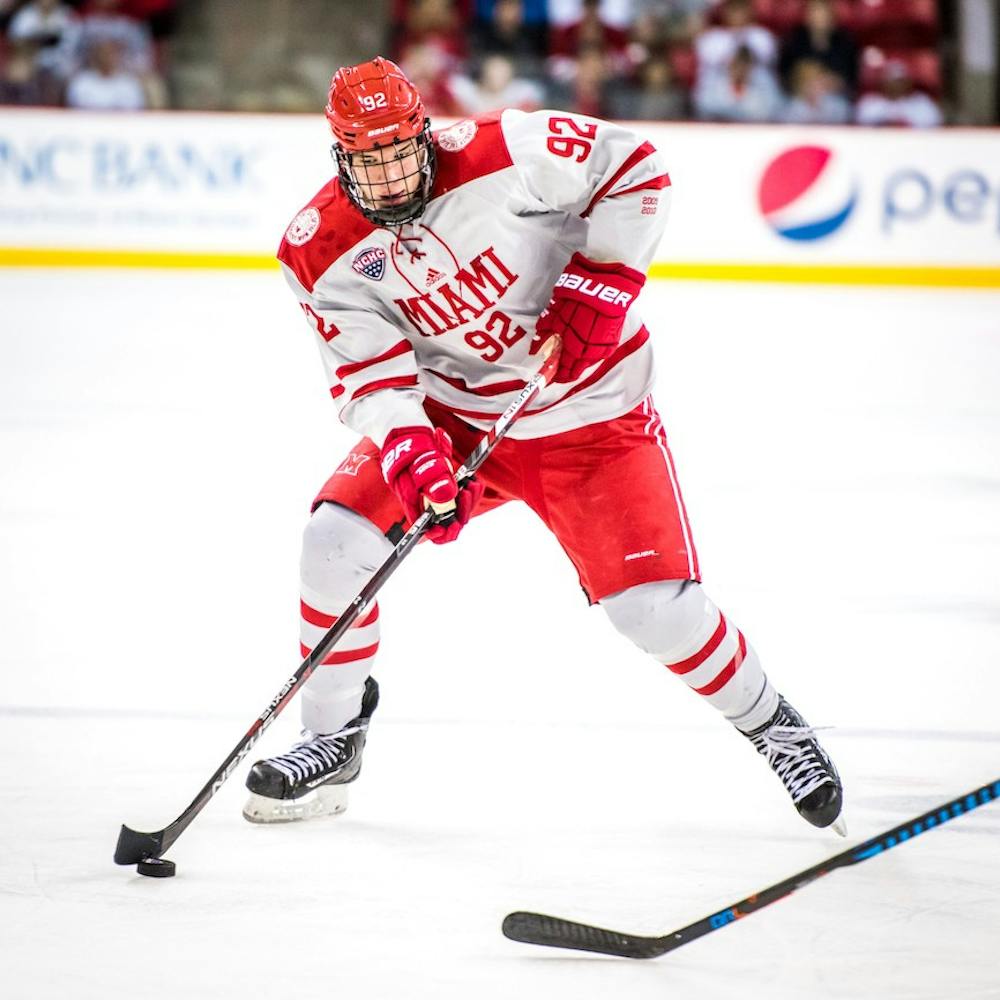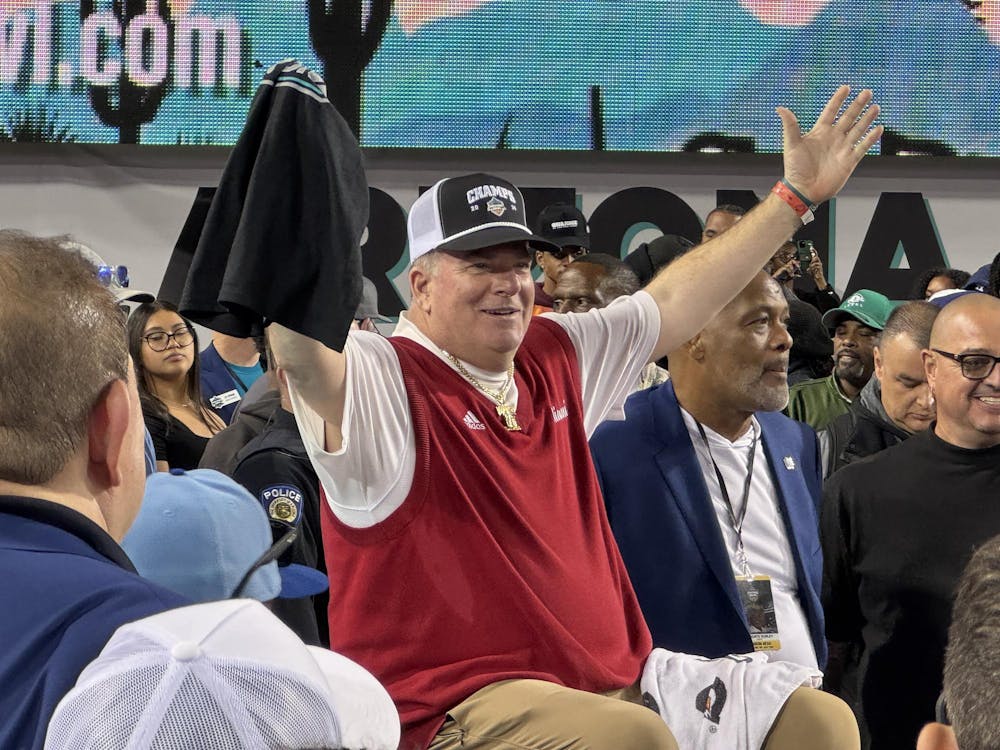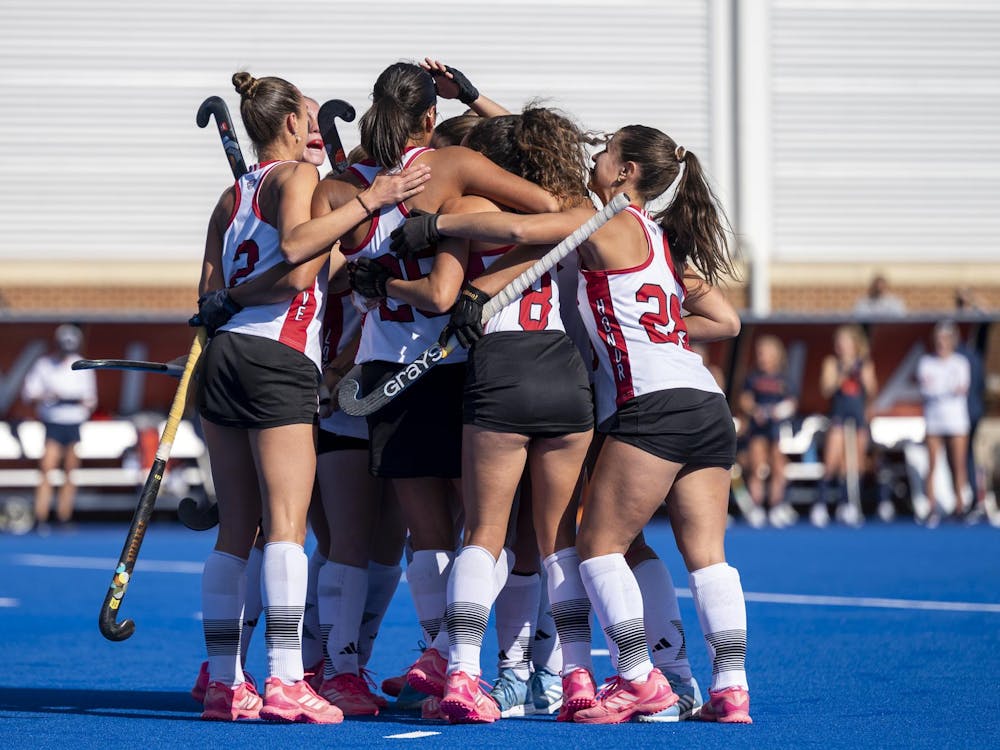The RedHawks currently have 14 players in their freshman class, and only six upperclassmen. With such a young team, inexperience is expected, but the future of Miami Hockey is bright.
"I'm not going to lie, I was pretty intimidated by the age and experience coming in, but I think guys in our leadership group -- guys like our seniors -- took us all under their wings, and it really helps when they're so accepting," freshman forward Willie Knierim said.
Knierim, who turned 19 this past January, was nervous prior to arriving in Oxford. Once he got here, though, he felt welcomed by the older members of the team.
The first few weeks at college are hard no matter who you are. The stresses of dorm life, classes and being away from home can make adjusting to the lifestyle a difficult task. For Knierim, adjusting to both college and Division I hockey was not easy.
"I came in, obviously, as the youngest guy. There are seniors who are 23, and actually one of our freshmen just turned 22, so there were a lot of older guys coming in," Knierim said.
Most of the current Miami freshmen, athlete or not, were born in 1998, making them 18-years-old when they arrived on campus. However, the majority of freshmen hockey players in the United States were born before 1998. In fact, roughly 92 percent of the freshmen playing Division 1 hockey this season were born in or before 1997 (neutralzone.net), the common birth year for current college sophomores.
A "true" freshman is characterized as an athlete who is in their first year of both academics and athletics. These players followed the typical academic path from senior in high school to freshman in college. This natural academic progression is very rare in college hockey. For the vast majority of freshmen that did not move directly from high school to college, their post-graduation plans almost always involve playing Junior hockey.
Junior hockey, often referred to as "Juniors," is competitive hockey generally for athletes 16 to 21-years-old, with leagues in both the US and Canada. The top levels in the U.S. and Canada are Tier I and major junior, respectively.
Freshman forward Carter Johnson, who turned 21 in October, chose a slightly different path after graduating from high school. Johnson spent three years playing amateur hockey -- two in the Manitoba Junior Hockey League and one in the North American Hockey League. Johnson, like Knierim, found difficulties in adjusting to the college lifestyle. He proved that coming into a new school and adapting to a new environment is challenging regardless of age.
"It wasn't super hard, but starting to balance school again and hockey, and then coming [to Miami], obviously, it's a step up in play and pace and all that," Johnson said. "It takes a bit of adjustment but once I got adjusted, I really enjoyed it."
More often than not, the older, more experienced athletes tend to be better players, though this is not always true in college hockey. Head coach, Enrico Blasi, believes that it varies depending on the player. The real difference that Blasi notices, though, is the older freshmen's ability to manage time compared to the true freshmen's.
"We've had true freshmen that have been dynamite, and we've had some older freshmen that we've had to work with," Blasi said. "Their adjustment to this level is a little bit easier, even though there is an adjustment period."
Enjoy what you're reading?
Signup for our newsletter
"About the true freshmen and not true freshmen, I don't think it really makes a big difference," senior forward Anthony Louis said. "Some guys develop more taking a few years in Juniors rather than coming straight here, and some guys it wouldn't help them to stay back in juniors. Just coming up to the DI level out of Juniors or high school, or wherever they played, is obviously a big step up."
Louis came to Miami as a true freshman and does not see a noticeable difference between the older freshmen and the younger ones. He feels that playing Juniors is the right choice for some, but the wrong one for others.
Johnson's time at Miami has also helped him grow more as a player than he ever has, even during his time in the MJHL and the NAHL.
"There's just so much technology and focus on getting you better everyday that it's just a huge help," Johnson said.
Miami's program is dedicated to making its players better everyday, no matter what age they are. That is the only thing, other than winning a championship, that matters once they get here.
"It was tough playing against older, stronger, faster competition, but I figured it out quick and I think I'm finding my way here in the final stretch," Knierim said. "I just hope I can help the team to a championship here in the near future."
With eight games left in the season, the Red and White will look to secure a spot in the NCAA Tournament and make a run at the Frozen Four. Miami will play St. Cloud State University away on February 10 at 8:30 p.m. The RedHawks swept St. Cloud in their last meeting in early January.




